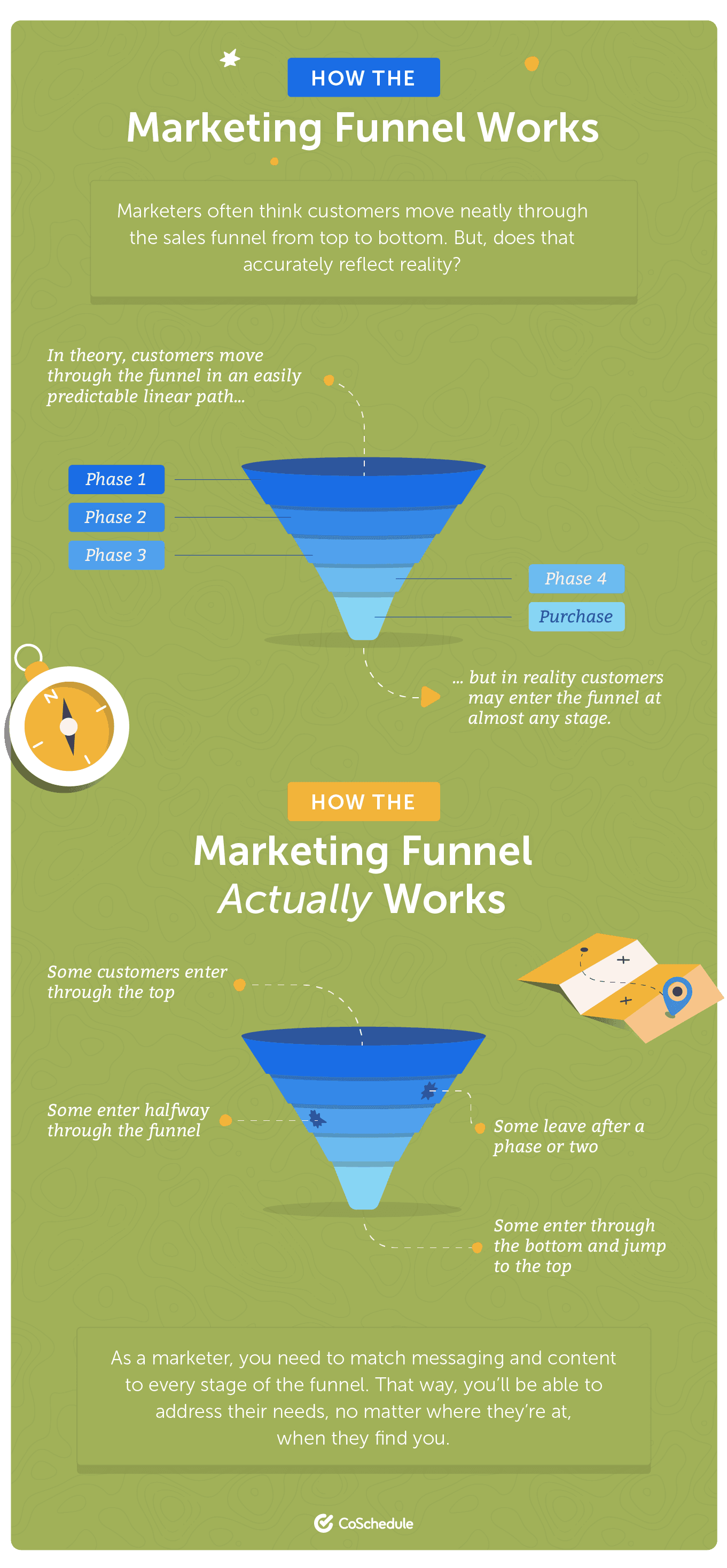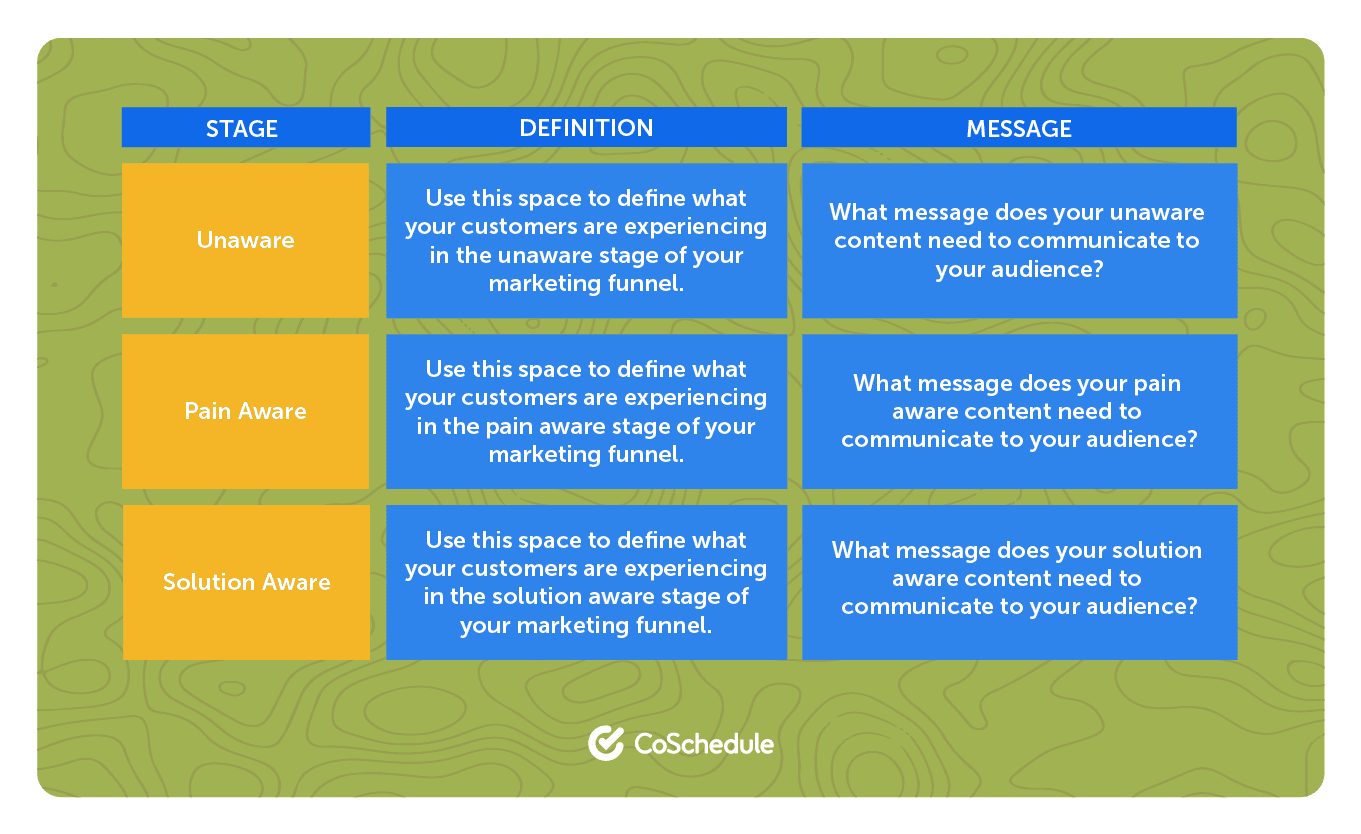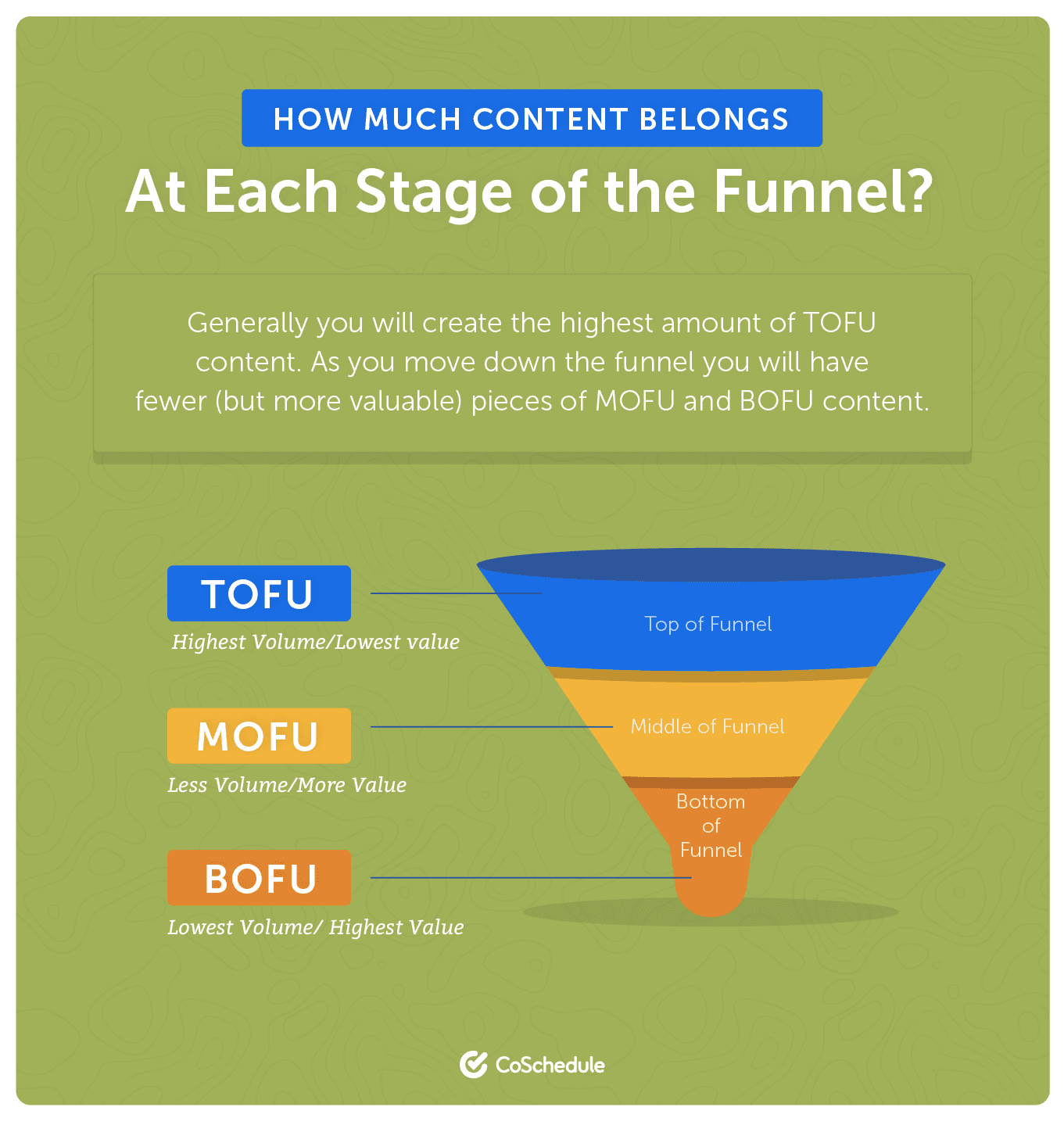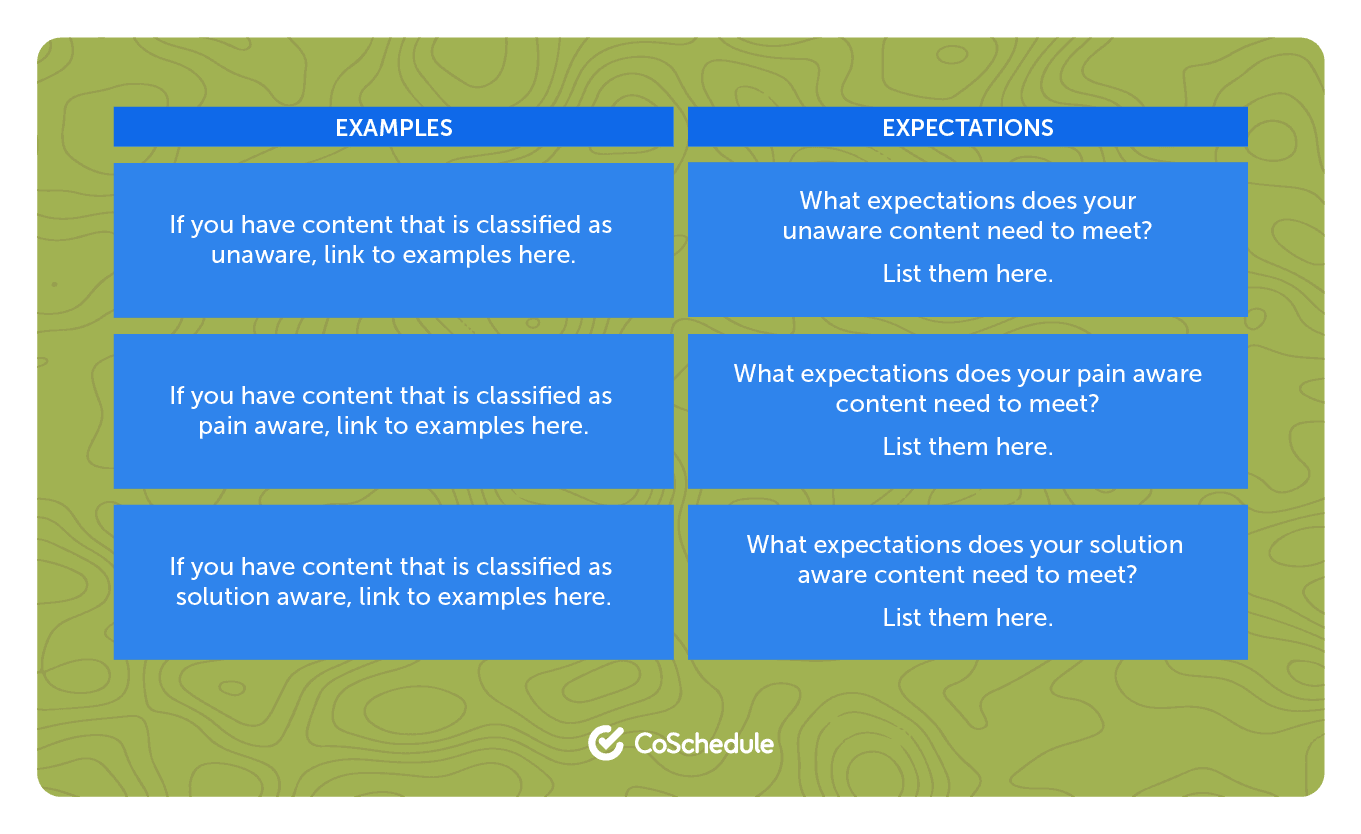Here’s the problem: You’ve created an excellent website, you’re publishing tons of great content, and you’re executing a thoughtful marketing strategy… But you’re still struggling to drive sales. This can be a frustrating problem and a challenge to solve.
The best place to start diagnosing potential issues is to develop a strong understanding of how the marketing funnel works. The goal of any marketing strategy is to deliver the right messages to the right people at the right time. After all, it’s this type of personalized messaging that drives and paying customers.
While a marketing funnel is one of the most basic elements of marketing, it’s also one of the most important to thoroughly understand. It underpins everything you do as a marketer, from social media campaigns to product demonstrations.
What Is the Marketing Funnel?
The marketing funnel is a strategic model that illustrates the stages a potential customer goes through before making a purchase. It is often depicted as a funnel shape, with the widest part at the top to represent the broadest group of prospects and narrowing as customers move down to the point of conversion.
- Awareness: At the top of the funnel, people become aware of a product or service. This could be through advertising, social media, content marketing, or word-of-mouth.
- Interest: Once aware, prospects begin to show interest by seeking more information. They might follow the brand on social media, sign up for emails, or browse the website. This is the stage where brands engage their audience with more educational and informative content.
- Consideration: At this stage, potential customers are comparing options. They are evaluating different solutions and brands that could fulfill their needs. This is where targeted messaging, case studies, and customer reviews come into play.
- Intent: Prospects have shown strong interest in a particular product or service and are leaning toward making a decision.
- Purchase: This is the point where the prospect makes a purchase decision and completes the transaction. Effective calls to action (CTAs), discounts, or limited-time offers are often used to encourage conversion.
- Loyalty/Advocacy: After the purchase, the funnel doesn’t end. Brands aim to nurture customer loyalty by offering great post-purchase support, personalized recommendations, and fostering advocacy.
Similar to sales funnels, prospective customers begin at the top when they’re aware of a need. They go on to consider products to meet that need, to finally choose a product to buy. We will dive deeper into each aspect of the marketing funnel below:

How Does The Marketing Funnel Work?
Understanding how your customers flow through your marketing funnel is important to ensuring that your marketing funnel stages are doing the job well.
In theory, people move from one stage to the next in a linear fashion within the marketing funnel.
In reality, people may move from stage to stage multiple times before ever making a purchase. People might read a blog post, view a pricing page, and come back to your YouTube channel two weeks later. This back-and-forth is a crucial part of how the marketing funnel stages work.
The marketing funnel is what guides potential customers through certain touch points until they are ready to buy
Here’s an illustration that shows the different parts of the marketing funnel stages:

Understanding Marketing Funnel Stages
While marketers may label each phase of the marketing funnel a bit differently, they all revolve around the same idea: Every marketing funnel has a top, middle, and bottom.
But even if the marketing funnel doesn’t flow as simply and chronologically as we’d expect, it’s still important to have content and messaging at each stage. It’s the best way for your brand to meet customers where they’re at, no matter which stage of the process they find you in.
Let’s take a look at each stage of the conversion funnel and how to identify the wants, needs, and desires of potential customers in each stage.
Top Of The Funnel: Awareness
The unaware phase is the very top part of your marketing funnel (TOFU). We define this phase as prospects haven’t identified a pain or a solution.
They may have stumbled across a link to our blog or website within a piece they were reading, met us at an event, or saw an industry ad. Another possibility is that something we published piqued their curiosity.
Middle Of The Funnel: Consideration
The middle of the marketing funnel (MOFU), also known as the consideration stage, is where people begin to search for a solution to their problem.
They turn to search engines, comparison sites, and recommendations from a friend. Or, they come directly to your site if you got on their radar and built brand recognition in the awareness stage.
At CoSchedule, we break this down into two mini-stages:
-
- Pain aware: “I know I need to solve this problem.”
- Solution aware: “I know I need to find a tool to solve this problem.”
Bottom Of The Funnel: Purchase
The bottom of the marketing funnel (BOFU) is filled with people close to making a purchase. They likely need messaging and content that reinforces the fact that their decision to choose your product is the right one.
Use these marketing funnel definitions or come up with your own. After you’ve nailed yours, record it in your template so the rest of your sales and marketing team is on the same page:

Mapping Content And Messaging To Each Stage Of The Funnel
Typically, more content and advertising will be created at the top to bring people in, and fewer but more targeted pieces in the middle and bottom to encourage sales.
For example, a company may have tons of blog posts, social posts, emails, ads, and so forth, but fewer website pages where actual sales happen.

- “A customer’s journey isn’t linear—and you shouldn’t expect it to be; there are external factors always at play outside of marketing and sales control. But what you can do is make sure your organization has significant coverage at each stage of the funnel.” —Amanda Thomas, managing partner at Konstruct Digital
We need a plan to deliver content at each stage in order to meet consumers wherever they’re at in the funnel.
Top Funnel Content: Unaware
In the top of your content marketing funnel, customers know absolutely nothing about your brand. The end goal is to have people learn more about your company, build reputation, and increase brand trust.
The message that needs to be delivered to your audience in this phase of the funnel should be about solving a problem or answering a question they might research. They’re reading your content for a reason. That problem may or may not be directly solvable by your product, but it should be something that your target audience cares about.
This usually done using the following content formats:
- Blog posts (optimized for SEO)
- Podcasts
- Infographics
- Social media posts
- Videos
If you’ve already written marketing content, how do you know if it falls into the TOFU/unaware category? Ask yourself these two questions:
- Does this content relate broadly to your audience’s interests (not just your product)?
- Does this address a potential pain point?
Categorize any pieces as TOFU content where the answer to both questions is “yes.”
The final piece to the top-funnel marketing puzzle is the expectations that your unaware content needs to meet. Remember: the goal of TOFU content is to build brand awareness and trust. Therefore, metrics to track at this stage include:
- Pageviews
- Organic traffic
- Video watch time
- Number of podcast listeners
Add this information to the expectations column of your template:

Middle Funnel Content
Once people know they have a problem to solve, they move to the middle of the marketing funnel. We can break this section down into two mini-steps: pain and solution aware.
Pain Aware
The pain aware phase happens when the potential customer realizes there is a problem that needs to be fixed. They’ve identified an issue/challenge with their existing process, and are actively looking for information to help them fix it.
(The difference between the pain aware stage and the unaware stage is that the problem you are looking to solve for your reader directly ties into your product.)
Messaging at this stage of the funnel is simple: “Here’s the problem and how to fix it. You can do this yourself, but our product will make it 10x easier.”
MOFU content is best suited to the following content formats:
To identify if your previously written content fits the pain aware stage, ask yourself the following:
- Are you addressing a specific problem that your product solves?
- Are you teaching them how to solve this problem?
- If the answer is yes, you can file that content under pain aware.
Add in the expectations your pain aware content needs to meet, as well as any examples that you may have.
Solution Aware
When a potential customer realizes that there are products out there that may help solve their problem, they move to the solution aware phase.
These prospects feel a specific pain and just discovered there are solutions for it. They’ve hit the point of frustration where they actively seek solutions to help. They know tools are designed to help them solve the problem.
Any messaging for these MOFU prospects should be targeted toward the solutions that solve their problem (including your product). They could take care of the problem by themselves by implementing your advice. However, your product will make it even easier.
We can see this in content formats such as:
If you’re trying to categorize solution aware content for the middle of your marketing funnel, here are the questions to ask:
- Are you addressing your product category directly?
- Are you showing customers what to look for in the solution they’re searching for?
- Are you positioning your product against others?
In an ideal world, the call-to-action of MOFU content would be to opt-into further marketing messages. By having a MOFU customer join your email list, for example, you have a direct line of communication with them—which you can use to send BOFU content. (More on that later.)
Because of this, track lead generation metrics for middle-funnel content such as:
- Opt-in rate
- Qualified leads
- Email subscribers
- Pages per session
- New vs. returning visitors
Bottom Funnel Content: Most Aware
Once your potential customers have read your middle-funnel content, they move on to the purchase phase. At this point, they are aware of your organization and are actively thinking about purchasing your product.
Now you need to convince them that your product is the best one out there. Some recommended content types for this phase of your funnel are:
In the product aware phase, your customer is finally aware that your product is the solution that they’ve been looking for. We define this as potential customers learning our product is a solution to the pain. They may be trialing and comparing different tools to ultimately choose the best one that will solve their pain.
Either way, the message that needs to be delivered to your potential customers at this point in the funnel is: while other products could solve their problem, yours is the best option.
Based on that information, decide what kind of message you need to deliver with your product aware content and record it in your template.
Trying to decide if your existing content fits into this format? Ask yourself the following:
- Are you directly positioning your product as the best solution to their problem?
- Are you showing them how your product works?
- Are you emphasizing what makes your product stand out?
The final step for your product awareness phase is deciding what expectations your product aware content needs to meet. The end goal for BOFU content is for a prospect to choose your business’s product or service as the solution for their problem. So, track sales-related KPIs like:
- Conversion rate
- Number of sales
- Demo conversions
- Revenue generated
- Number of enquiries
Bonus: After the Funnel
When people reach the purchase stage of their sales journey, marketers often think their job is done. That couldn’t be further from the truth.
You should use content as a vehicle to keep new customers engaged. The more engaged they are, the more likely they are to buy from you time and time again. It’s why a 5% increase in customer retention can boost profits by 75%.
Build this customer advocacy by creating content for customer retention. This could be:
- In-app tutorials for specific features
- A welcome email series with a discount on their next purchase
- Follow-up emails with an incentives to join your referral program
Track retention metrics like the following to judge how well your post-funnel content is performing
- Churn
- Repeat customer rate
- Customer lifetime value
Either way, make sure you have content prepared for your newest users. It’s one marketing tactic most people forget about, but goes a long way in building an army of loyal customers.
Create Awesome Content For Any Phase In Your Marketing Funnel
Congratulations! You’ve gained a solid understanding of how your marketing funnel works and the journey your prospects take from awareness to loyalty. More importantly, you now know how to address the gaps in your funnel and craft content marketing campaigns that guide prospects through each stage, ultimately increasing conversions.
Now that you’re equipped with the framework, it’s time dive into one of the most powerful tools at your disposal—content creation. Content is the fuel that drives prospects through the funnel, and the right type of content at the right time can dramatically influence the decisions people make.
